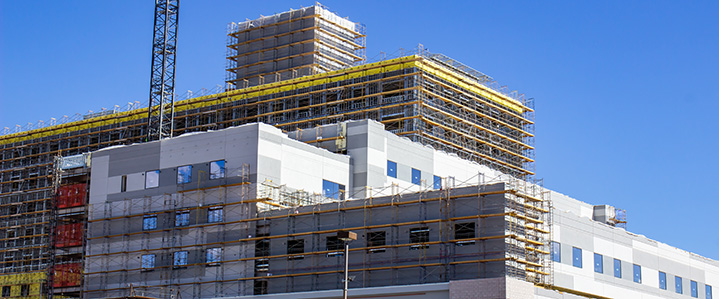How to Investigate and Prevent Accidents in Research Laboratories

With the proper training, engineering controls and administrative precautions, laboratory safety risks can be effectively managed. However, accidents can and do happen. Accidents, while unfortunate, present an opportunity to learn and improve the performance of a laboratory safety program. The investigation must be carefully and thoughtfully executed to gain the full benefits of an accident investigation program.
Six Steps of an Accident Investigation and Prevention Program
1. Notification and Response
The notification and response protocol for any accident must be clearly understood by all staff. Ideally, the supervisor or a committee should lead the investigation. The safety professional should serve as a facilitator throughout the investigation process. Stakeholder involvement early on is important for acceptance of the findings, and ultimately the corrective measures.
Time is critical. An effective, rapid response will ensure that the injured person(s) receives the appropriate medical attention and will not potentially cause injury to others. For example, in the case of an exposure to an infectious pathogen. A rapid response shortens the timeframe between the event and the investigation, improving the quality of the data collected during the investigation and interviews. The site must be secured and the accident scene should not be disturbed until the necessary information (e.g., photos) has been collected. Certain accidents that involve a release of material to the indoor or outdoor environment will require an initial response that may compromise the ability to collect all the necessary information. The need for complete information must be considered in light of the emergent environmental health and safety concerns.
2. Site Investigation and Interviews
The site investigation and interviews with the affected party or witnesses are the core of the accident investigation program. The analysis, and ultimately decisions regarding corrective action, will be guided by the data and information gathered during this phase of the accident investigation. Data quality is crucial. A uniform approach to conducting both the site investigation and the interviews is essential for consistency.
Obtaining relevant facility information during the site visit is essential. Testing and verification records for safety equipment (e.g., fume hoods, safety showers, eye washes, centrifuges, etc.) can provide clues of potential contributing factors. Product recalls on laboratory equipment may also be an important consideration. Certifications regarding the strain of biological organisms and any attenuating factors (e.g., replication competency) are essential for investigations involving biological agents. Reporting requirements must also be assessed to determine if federal, state or local agencies need to be notified.
Speaking with the injured party as close as practical to the time of the event will ensure better recall of potentially related or causative factors. The timeframe of the interview has to consider the severity of the injuries. Receiving proper medical attention is the highest priority for the injured party. The interview should be conducted in a neutral environment and the tone must be non-confrontational. The accident investigation process is a “fact finding” – not a “fault finding” exercise. It may be necessary to assure an appropriate level of confidentiality in order to get the highest level of honesty during the interview. The witness must not be led, and these basic questions must be addressed:
- Who? – Who was involved? Who was present?
- What? – What procedure was being conducted? What material / equipment was being handled?
- Where? – Where did the event occur?
- When? – Date and time of day?
Asking open-ended questions will ensure that the witness is not led to a particular conclusion and will allow the witness to reflect on the events leading up to the accident. Obtaining corroborating information from other witnesses is valuable for assessing consistency in the accounts. This can be especially challenging in research environments where the native languages of the researchers may differ from each other and / or the investigator. In this situation, it may be necessary to develop a standardized questionnaire in the native language of the witnesses in order to insure an accurate account of the events leading up to the accident.
3. Root Cause Analysis
There are a number of accident investigation techniques, and there is no “right choice” as to which technique to use. Some techniques are more valuable for proactive accident prevention or risk management analysis, such as Failure Mode Effects Analysis (FMEA). Others are better suited for retrospective analysis of events, such as Root Cause Analysis (RCA), which has gained widespread use to investigate accidents. RCA provides a systematic method to trace the cause of an accident back to its source or sources. Often, the source of an accident is multiple layers below the observable conditions noted during an interview or the initial site review. Although there is no correct number of inquires, the point is that by asking “why” multiple times to explain an event the root causes of an accident will be revealed. Here is an example to illustrate this method.
Example Scenario: A researcher was stuck with a needle containing a potentially pathogenic organism, requiring treatment with a potent course of antibiotics.
Q1: Why did the researcher get stuck with a needle?
A1: Because the researcher was not familiar with using this device.
Q2: Why was the researcher not familiar with this device?
A2: Because the researcher normally used a single channel pipette to transfer the potentially pathogenic material, but that type of pipette was not available.
Q3: Why was that pipette not available?
A3: Because it was broken and the laboratory manager did not order any more.
Q4: Why did the laboratory manager not order any more?
A4: Because the laboratory manager did not know there were no more working pipettes.
Q5: Why did the laboratory manager not know there were no more working pipettes?
A5: Because the laboratory does not have a system to track equipment.
In this illustration, the lack of an equipment tracking program was the source of the accident. If the researchers had working pipettes readily available, this accident would not have occurred. While this is the root cause, there are some contributing factors as well in this example, including training for employees on proper safety procedures (for example, never use a hypodermic needle to transfer potential pathogenic organisms) and a communication process with the lab manager regarding the need for proper equipment. These must also be considered in order to optimize the benefit of any intervention effort.
The goal of an RCA is to identify the root causes by better defining what happened, exploring how it happened, and ultimately determining why it happened. Once these questions are answered, corrective measures can be implemented and monitored, preventing similar accidents in the future.
4. Report of Findings and Review
After all the data has been collected and the root causes determined, the results of the investigation need to be communicated in a report to the supervisor of the area in which the accident took place. Again, the purpose of this is to improve safety performance and not to assign blame for the accident. Those involved in the accident or who were witnesses should be given an opportunity to review the draft report to insure that it accurately reflects their understanding of events.
In some cases, or at certain institutions, there may be legal requirements regarding accident reporting. These need to be understood well before the accident process begins. The requirements around personnel privacy regarding healthcare information may create barriers to obtaining certain health status information for the accident victim, and appropriate counsel should be sought if it is necessary to obtain personnel health information to inform the accident investigation process.
The reporting of findings and the analysis must be completed rapidly, while attention is still focused on the event. This will allow time to consider and implement corrective measures and obtain the needed resources to execute the necessary changes.
5. Implement Corrective Measures
The RCA will identify the root causes and related factors that need to be addressed to prevent similar accidents in the future. An implementation plan for corrective measures should be developed shortly after acceptance of the investigation findings. At a minimum the plan should include:
- Scope of the corrective measure
- Resources needed for implementation
- Expected outcome
- Metrics to assess performance
The scope should be indicated by the RCA, and a determination should be made if the corrective measure is unique to a particular laboratory or department, or if improvements are needed organization-wide. Resources, including staff time, must be allocated to implement the measures, and the expected outcome should be clearly stated. Lastly, proactive assessment measures should be identified in advance. They must be both practical and meaningful so that performance in this area can be monitored over time.
6. Monitoring
Corrective measures need to be monitored to ensure they are being implemented and that they are having the intended effect. Where possible, metrics should be integrated into existing systems (e.g., laboratory inspections or audits) to streamline the performance improvement process.
Metrics can be process-oriented (e.g., staff completes training program) or results-oriented (e.g., lab inspections document compliance with protective equipment protocols). Both types of metrics are valuable, and often both are necessary. Process-oriented metrics are leading indicators and are valuable if they are closely linked to outcomes. Results-oriented metrics are lagging indicators, although they are very good at assessing ultimate compliance with prescribed outcomes.
Accidents are an unfortunate reality in workplaces, including research environments. If the accident is properly investigated, there is an opportunity to improve safety performance. Incorporating these six steps into your accident investigation program will help the investigation team identify root causes, prescribe appropriate corrective measures, and implement performance metrics to insure a safer workplace.
If you’re looking to improve safety in your laboratory, contact us to talk with one of our experts about strategies that will strengthen your lab safety program.
This post is based an article authored by Kevin Coghlan and published in Laboratory Equipment 08/2007.
Subscribe
to our blog
"*" indicates required fields




